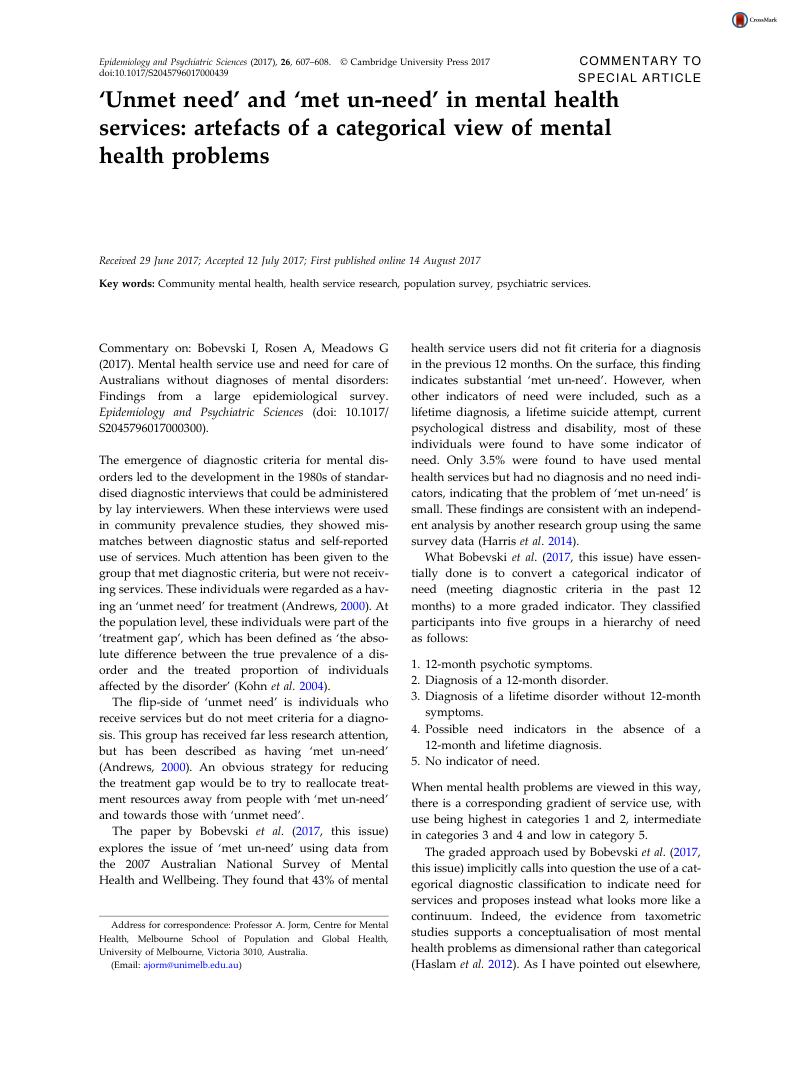Crossref Citations
This article has been cited by the following publications. This list is generated based on data provided by Crossref.
Coêlho, Bruno M.
Santana, Geilson L.
Viana, Maria C.
Wang, Yuan-Pang
and
Andrade, Laura H.
2021.
“I don’t need any treatment” – barriers to mental health treatment in the general population of a megacity.
Brazilian Journal of Psychiatry,
Vol. 43,
Issue. 6,
p.
590.
de Vries, Ymkje Anna
Bos, Elisabeth H.
Roest, Annelieke M.
and
de Jonge, Peter
2023.
Tasman’s Psychiatry.
p.
1.
de Vries, Ymkje Anna
Bos, Elisabeth H.
Roest, Annelieke M.
and
de Jonge, Peter
2024.
Tasman’s Psychiatry.
p.
921.




Target article
Mental health service use and need for care of Australians without diagnoses of mental disorders: findings from a large epidemiological survey
Related commentaries (2)
Populational and individual perspective on needs
‘Unmet need’ and ‘met un-need’ in mental health services: artefacts of a categorical view of mental health problems